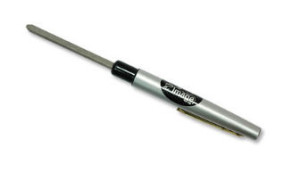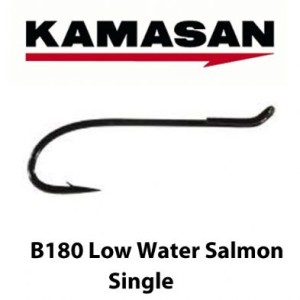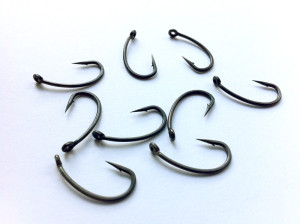If you want a simple short-cut to carp fishing success you’ve come to the right place. This advice applies to any form of fishing because it is so vitally important. Here is a list of simple details that I wish I’d discovered when I began carp fishing when information was in much shorter supply.
Over the years I have been shocked by the number of newer carp anglers who over-look the ultimate importance of their hooks and their hooking efficiency. So many unnecessary blank sessions come from anglers not realising details they’re missing on the end of their line and more awareness of aspects of the part of their tackle that truly matters the most…

A hook sharpening file
Sometimes it’s very easy for a carp angler to get fixated by new products; like bait flavours, new boilies and pellets etc and the constant stream of new bivvies and ‘camo’ gear that emblazon the advertisement pages of glossy fishing magazines meant to seduce us. These products are very well designed to meet new anglers’ fashions and needs and specific purposes. However, the ability of a hook to actually hook a fish is a pretty old basic need and deserves far more personal attention from many anglers to improve the results of their fishing time and efforts spent.
The basis of the information below arrived from my use of thin wired light-weight ‘Kamasan’ hooks 25 years ago or more, which were extremely effective but occasionally opened-up on hooking bigger carp. The answer came in the form of very precisely sharpening thicker wire hooks like the ‘Kamasan’ low water salmon hooks with the longer shank.
I have used this types of hook and many similar designs for years and believe their point’s angle of penetration to be absolutely ideal for my purposes. It’s proven superior in sea fishing applications for me also.

These have proven useful on many of my trips
(You might bear in mind fishing hooks do not ‘hook’ fish by themselves, but require force, from a particular angle of line attached to make the point penetrate effectively enough to do its required job.)
In the ‘British Carp Study Group’ magazine (Spring 2007) famous angler and one of the group’s scientific advisers, George Sharman, proposes that an ideal hook point penetration angle / line angle of force of 26 degrees transferred into the hook point is about right, teamed with an in-turned eye.
This has shown ideal initial ‘pricking of fish’ and secure hook hold properties with hooks of varied gap sizes. Now I’m not an engineer, but my practical trials and experiences with hooks and indication / conversion to hooked fish leads me to similar conclusions. It may be noted that I’ve fished for more than a couple of decades using bite indicators and various set-ups tuned to register the minimum of line movement since positive benefits of this were first discovered in my winter fishing especially.
I personally use a sharpened hook and I realise this sound ‘antiquated’ perhaps today. But I consider it is vital for many surprising reasons laid out below. Hooks catch fish but many benefit from a little help and close attention to maximise their effectiveness. It takes personal fishing trials and indication / catch rate comparisons over time to achieve true confidence in the hooks you choose to use. Why not use the best designed best quality hooks you can buy for your personal fishing styles and activities, which may be extremely varied indeed.
Sharpening hook has many hidden benefits on the whole of your fishing and confidence levels and even thinking and approach to everything you do to catch fish.
Fishing hooks are often an after-thought when compared to the attention brought to bear on expensive carp rods and reels for instance. By disciplining yourself into sharpening every hook you use you not only get a great feel for the action and success of any hook pattern compared over time, but ensures that no faulty eyed or blunt pointed hooks are used which definitely cost you fish.
The easiest way to lose a fish is to give it the chance to consume your bait and have a hook either inefficiently penetrate its skin, or that has the wrong design for your rig purposes or situation, size or shape of bait, hook link material action etc. Your rig is the converter of attempted bait consummation. If it is not maximised in every way possible to convert attentions to your bait into hooked fish you may as well fish with no hook or no bait for the majority of your time spent fishing.
Most fish are lost without an angler ever realising a fish was ‘on’ in the first place, which is a shame and is one area the best most detail oriented tuned-in anglers excel out. This may seem ‘over the top’ but then why should you not benefit from little differences that set the best apart from the rest? Rigs don’t need to be complicated just as with baits, but it’s the attention to details in getting the complete process refined so the right bait and rig for any given fishing situation are the right ones. This can produce above average catch consistency without an angler having the added advantage of access to better bait techniques and technology or more fishing time available.

.
Don’t forget many hooks bought in packets may not be as sharp as is truly needed. Mostly a carp will hook itself, but on pressured waters a hook any less that past needle sharp can well mean many lost fish you never ever imagined had taken your bait into their mouths. A diamond hook sharpener is essential to me – I’d not bother fishing without treating my hooks to a very precisely formed diameter point and length of point too. I find a hook with a longer point which is well sharpened and thinned along its length makes a massive difference to numbers of bigger fish hooked. This ‘point’ applies to chemically sharpened hooks also.
OK, I’ve over-done sharpening sometimes and lost 40 pound plus fish at the net as the point opens, but would such fish have ‘spit’ the hook anyway and not been hooked? It’s very likely. Most anglers use a heavy lead on any of a range of rigs styles and lengths. But most don’t consider the fact that we are really trying to get around how the fish are feeding in response to angling pressure and associated feeding behaviours in response to what the anglers themselves are doing. Sure a heavy lead and tight line hooks lots of fish, but very often a light lead even at range with a longer hair and hook link will produce more fish and, often more warier bigger fish too.
If you find you are ‘dropping fish’ or ‘pulling out’ of them during the fight, or even getting odd single bleeps on the bite indicators which don’t produce positive action afterwards, try sharpening your hook.
I cover my freshly sharpened hook with paste and coat the hair and bait in paste. I often use 2 or 3 types of homemade paste on a rig beside other boilie or paste baits for example in order to vary the solubility and rate of breakdown of bait and give the fish more to ‘think about’.
This covers the taste of a sharpened hook and glint of hook metal before it oxidises and fades. Plus paste melting produces unusual bait movement and added dimensions to a curious fish.
In fact using paste on the hook and similar paste in different states in a PVA bag can really trip up fish even better than common set-ups that just use paste on the bait on a hair alone. I like to actually draw attention to the hook itself which is unusual these days. By using fresh balls of paste, air-dried paste and scalded paste bits together with a diversity of strategically included items in the PVA bag many fish seem to lose the grip on their ‘danger reference points’ momentarily. This is after all the aim of all our rig and bait efforts right?
If you’re still not convinced, why not trial identical rigs with sharpened and unsharpened hooks and see the difference over a range of hook designs. The results will be clear; I actually refined my results using rigs and a range of hook patterns to hook very shy biting crucian carp. I could actually observe the fish taking each bait and I was shocked that many makes and designs straight from the packet rarely produced a hooked fish. Often a fish would get hooked and get off in a second, while others stayed in the mouth despite attempts to twist and shake the hook out. I do appreciate that the quality and technology and design involved in hooks has been raised over the years by manufacturers but a personally physically sharpened hook has enormous benefits.
The realities of simple peace of mind and improved confidence that you are fishing as efficiently as possible really counts especially on tougher waters and when fish are not ‘playing the game!’ Using the most important piece of your fishing tackle which you have intimately inspected and shaped yourself really does produce more fish; getting into the habit of being more detail oriented adds up and the extra effort even influences your effectiveness in fish location and swim choice, thinking and approach to bait and efforts to minimise lazy conventional fishing practices whose edge has already passed.
As its Christmas coming up why not invest in a hook sharpener and really experiment in achieving the longest sharpest hook points possible, perhaps while watching all that Christmas TV. (I have no connection with ‘Fox International’ except I used to fish alongside Cliff (ha ha ha!) But their bar shaped diamond sharpeners are the most effective tool I’ve used for many years now.) The effort of sharpening your hooks will really pay you back for sure. It did for carp fishing legend Richard Walker…
Best of all, doing this will raise your confidence when you cast your rig into those cold winter waters, where a fish may only be willing to move just a few inches to feed and an extremely sharp hook is all you may have to initially efficiently hook a winter fish. Especially at times such as this, just a few minutes in concentrated effort sharpening your hooks, could well produce for you a very memorable fish worthy of your efforts.
By Tim Richardson.
About The Author
Tim Richardson is a homemade carp and catfish bait-maker, and proven big fish angler. His bait making and bait enhancing books / ebooks are even used by members of the “British Carp Study Group” for reference. View this dedicated bait secrets website here now…
https://www.baitbigfish.com



Comments